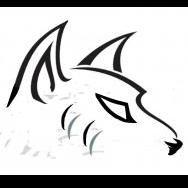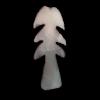Search the Community
Showing results for tags 'dyeing'.
Found 31 results
-
Hello all! Newbie here, with a question! Nothing overly involved or complicated here. I want to do something fairly basic, I think. I want to make these boots: ...look like this: These are the same type of boot: a WW2-era paratrooper 'jump' boot. The company that makes the new boot is the same company that made the original (Corcoran) and they are identical. I've read that I can get the 'creased' look by binding up the boots and soaking them in cold water for a day. Any advice on the coloring? Should I be dyeing, or using oils or waxes to tan the leather? Tips would be appreciated. Thanks!
-
Hello, This is my first larger project and ive already learned alot (read, mistakes I will not be making again ) I used NF oil before dying (NF oil had 24 hours before the dye) and after dip dyeing it resulted in a bunch of blotchy circles throughout the piece (24"x12" piece, blotchy circles are 1 to 3cm in diameter). I dip dyed using Pro Dye (Ratio of Bl/Gr/Ye dyes, cut 50/50 with 99% Isopropyl Alcohol). Any thoughts on how to recover a piece like this? I've thought about a second round of dip dyeing, or adding a layer of NF or Leather Balm to help darken the color and balance out the splotches (or at least make them more subtle). Appreciate any and all feedback! -David
-
Has any one tried this method? Found this picture on Facebook, the owner might be on here, I'm going to find a finer spraying nozzle and give it a go!
-
I'm making shoes. I am using milled veg-tan leather because this is what my teacher uses & I'm following along until I choose to make a different decision. I am going to dye the leather, but then I have to waterproof it. I bought some Fiebing's Resoline, which is an acrylic-based waterproofer that the sales person recommended because it will keep the leather supple and protect the dye while waterproofing. When I bought it, I didn't realize it was acrylic. Will the leather still accept regular shoe water-proofing after this? I usually Sno-Proof or mink-oil or some other oil-based protectant. Thanks!
- 11 replies
-
Hi, I have recently started increasing my leatherworking and as such have been using different dyes and started really embossing leather. Previously I would only have used Eco-Flo gel Antique on embossed leather as it sits nice in the grooves and darkens them. However, having watched several how to videos I am now experimenting with using normal dyes (currently have a Fiebings Waterstain that I am using) and then using a finish to darken the groves of the embossed bits. In the video I watched they used Fiebings Antique Stain finish but I cannot seem to get the black version of that anywhere online for a decent price (I am in Dublin, Ireland). So instead I got Eco-Flo gel antique black as from what I can tell they do the same thing. Here comes my problem, I tried it out on a small piece of leather that I stamped a little, Dyed it green with the waterstain and then applied the gel after it dried and tried to wipe the excess off straight away but it didn't really come off and just left a black smear over the green. I applied it with a dense sponge and wiped it off with a kitchen towel wrapped around a sponge. Am I doing something wrong? Is there a difference between the two antiques and should I keep looking for the fiebings one? Hopefully somebody can help as I really want to start using more colours but the whole idea of embossing is to get that nice dark vs light effect. Cheers, Jelle
-
Hi Everyone. First time posting, beginner. I'm having trouble with dye bleeding into the flesh side when edging. I also have problems when burnishing (with a normal round hand burnisher) as the edges tend to become quite soft and plasticised somehow and are consequently somewhat misshapen when I burnish them flat. All this makes the edges look quite scruffy and unprofessional (photos attached). I do, at some point, hope to recoup some of my outlay by selling pieces but am not happy with the quality yet. I use 1.8 - 2mm veg. tan shoulder or side, and am currently making (attempting) notebook covers and small card wallets. I use Fiebings spirit dyes and either tokonole or tan Kote for flesh side. Method - I cut then oil / finish skin side, tan kote or tokonole flesh side, then sand edges then dye edges then burnish edges with a little water. I try to be really careful when dying the edges (with a Q-tip) but it seems that I either don't get enough on to cover or it bleeds in almost uncontrollably. Any help or advice would be gratefully received. Best regards David
-
I’m just getting into working with veg tan and im have issues with it not dyeing evenly I’ve been using feibings stains/dyes and the instructions says something about using a cleaner before dyeing but it doesn’t say what the cleaner I should use? Or should I be using different dye?
-
I have seen lots of people who dye around areas that they are going to paint but Every time I try that it seems to be uneven. We usually spray the dye on and paint over but this sometimes leaves the paint not looking as bright. Does anyone have techniques for dyeing without the lighter and darker spots
-
Hi. I have used resolene to resist antique paste and it seemed to work. Does it also resist oil dyes?
-
Hi, I'm hoping to dye the yellow on these gloves black. They're deerskin leather so what method would you suggest to achieve this? Here's a link to the gloves: https://www.amazon.co.uk/gp/product/B00K6AKOYQ/ref=s9_simh_co_p60_d8_i2?pf_rd_m=A3P5ROKL5A1OLE&pf_rd_s=left-1&pf_rd_r=RWR92C8VWWBNYYY32YVJ&pf_rd_t=3201&pf_rd_p=518516127&pf_rd_i=typ01 Thanks!
-
Hope all is well with everyone! I figured I would upload a segment of the process in producing a couple of my product lines. (DNA Glove & Leather Six Pack) Creating a glove was the first leather project I started back in 2012. After spending over three years messing around with new product ideas concerning leather, producing a glove entirely by hand from scratch isn't as overwhelming as what it used to be. There's not that much info on this site about what exactly it takes to produce a glove. Hopefully one day baseball & softball gloves will have their own section on the site! https://www.youtube.com/watch?v=cPjpGppQ2gM&feature=youtu.be http://www.kozickicorp.com Alec
- 3 replies
-
- baseball
- baseball glove
- (and 6 more)
-
What sort of solvent can I use to clean leather dye, please? I'm using Fiebings oil dye, and up till now I've applied it with a cotton bud or a dauber, and just discarded them when I'd finished Today I used a small paintbrush, and tried to clean it with paraffin/kerosene, but it's not touching it
-
I'm trying to figure out how to get this light-colored stamping on dyed leather. Is the tooling being resisted before dyeing or is the dye carefully applied around the tooling? Or is it something much simpler than that? Sorry for the newbie question and any help would be greatly appreciated. Cheers, Victor
-
I grabbed this pic off the Internet because I'm intrigued with how he got the border of the stamp light and even the Seeder. I thought it may be stamped after dyeing to get to the leather under the dye, but I tried it and it was just a dark stamp. I'm fairly new...lol....any tips to replicate this effect?
-
Which is better for repelling dye/stain? I need to paint some letters light gray and dye the leather black. I've been experimenting with the two, and am still working on it, but though I'd ask if anyone has any experience in this area. I had planned to dye first, but it distorts the paint color if I paint on dye/stain.
-
I have been a visitor of this site for many years and can usually find the answer to my question without having to post (seems like everything I come across someone else has already figured out) but this one doesn't seem to have been answered before. My father bought a set of rawhide romal reins out of Mexico. The rawhide appears to have been bleached and he can't stand the color so he asked if I could figure something out. I have never worked with rawhide before so I'm unsure of the best way to go about this. I know a lot of people use coffee to dye their strands but this is done before the braiding begins. We both agreed that a similar color would be good if we could get it to take without destroying the reins. My concern is that if I soaked them in coffee the braid on either the body or the buttons would loosen or curl and the reins would be ruined? I also thought spraying or wiping them down might be safer and producer a good result? Lastly, I thought maybe I would dye some rawhide cream then work the conditioner into the reins (since the conditioner is supposed to be safe for finished products)? Has anyone ever tried something like this before that could lend some advice? If not maybe some insight as to what could be expected if I follow any of the outlined ideas above? Any advice would be very much appreciated. I have attached a few pictures of the reins so you can see what I'm working with. Thanks in advance.
-
Good morning everyone! So I was wondering how you go about getting your tooled design one color and the rest of the leather another color without completely messing up your entire project? ha! I'm guessing one would use a resist of some sort and then do you just very carefuly dye around the tooled design? I really want to learn how to do this. I've researched the forums here and found examples people have posted out of their own work but never found a definitive explanation as to how this look is achieved. I have attached a picture of some spur straps a tack maker created that are the exact look I'm going for. They are an absolute beautiful piece of work and I would love to be able to achieve that two tone color effect in my own work. Thanks for your time everyone and hope you are all doing well!! I'm sure many of you are very busy getting Christmas orders together!!
-
Hello guys, yesterday I finished tooling my first armguards and I decided to dye it. I was following video tutorial from youtube but it didn't went so well. So I want to ask what I was doing wrong and how should I improve it for next time. Btw I'm not from english speaking country so please apologize my english skills. Here is the way I was dyeing it : This is how it was looking before dyeing - I know it's not perfect but it was my first try. I've colored some lines : When I was done, I have applied fiebing's finish on that. Wait about 2 hours then applied Eco flo antiq gel. For applying antiq i used piece of cotton shirt and did in circular motions. It was my understanding that after buffing color with paper tissue color will stay in impressions and make the impression look darker. Well it didn't work as I presumed, some of impressions are darker but some not. Here is result : Can you please tell me some advice how to avoid such a things ? Thank you.
-
Hi, I’m new here and have never worked on leather before but am interested learning some dyeing skills. I’m planning on buying some tan brogue boots and dying them in a chocolate and aubergine colour scheme (see pictures). Any recommendations on which dye products to use and how to do this would be much appreciated. Thank you in advance.
-
Hello all, I desperately need some expert help!! I make elastic Y-back suspenders in six different colors for children, and I'd like to change the leather patch on the back. Right now, I use a faux leather in three different colors and would like to transition to one color that I can have my company name embossed on. I'm extremely green when it comes to working with genuine leather. I've searched around locally and no one can really help me start from the beginning, which is to determine the best leather to use as a back patch for suspenders. The only recommendation I've been given is to maybe try a veg tan leather. My dilemma with that is this: 1) It's not dyed! Yes I do need a color that matches all six suspender colors, but I have no idea about dyeing leather. I can find a color I think might work on the internet, but it's just a picture. I still need to know what color dye to pick and how to dye it. Can someone please tell me if veg tan is really my only option to get the right color leather needed? I don't have the expertise to do what needs to be done with veg tan and no here seems to either or at least they don't want to help. Any recommendations on how to find more potential colors or someone to dye it for me because me dyeing it isn't an option? 2) As explained to me 2/3 oz veg tan is the lowest weight in that type but it still seems too thick for these suspenders. Would you agree? I need something that can be sewn on a sewing machine but not flimsy. 3) After I've found the right leather and color, I need it to be embossed. Can you please advise the best way to make this happen? People have mentioned laser engraving to me. I've also been told about stamps you can buy. Recommendations? 4) Lastly, I've been told that this is the process I need to follow to reach the end result of the actual back patch (assuming I go with veg tan) : once the leather is bought, have the shape clicked out, dye the shape, emboss/engrave the shape, then put a finish on it. Would you agree? Is the process pretty much the same if it's already dyed (click, emboss, finish)? As a side note, I had a die of the shape professionally made, but I do not have a clicker press. It would be optimal if I can find an appropriate weight leather for suspenders that is already dyed to the right color and would emboss well. Please help!!! Thank you! C Pack
- 9 replies
-
- picking leather
- dyeing
- (and 5 more)
-
So I got a problem I´d really like to fix. As I made several sword sheath (Larp) and similar for customers so far (and will do more in the future), I usually wet mold them around a wooden form before stitching, sometimes I add some tooling and sometimes I treat them with hot water to get the a little stiffer. My usually sequence for doing this was more or less this one: - tooling (wet) - molding (wet) - stitching - dyeing - heat treatment/boiling (wet) - applying finish and stuff. So the main problems I got are: 1) When I dye the piece, the colour becomes uneven as some ares are compressed more than others through the process of molding. Maybe it´s usefull to add that I use a sponge for the dye-job, when the colours should be lighter, I wrap some cloth around it so there´ll be less colour per layer) -> My solution would be to dye it before molding, as it´s easier to apply evenly and the fibres are mor even, too. The reason of doing it afterwards was, that the dye stiffens the leather a little bit, but I think an even colour has a higher priority. 2) The main issue is, that the tooling really looses definition. After tooling I case it two more times (molding and "boiling") so it evens out a bit once and again. Besides for the heat treatment I use water hot at about 75 to max. 90 °C (~167 - 194 Fahrenheit) (I use a boiler and a thermometer, so I never get the same temperature). For the process I boil the water and pour it over the stitched sheath on the form, so even if I use 90°C, the leather wouldn´t reach that temperature completeley and won´t get that brittle. But with this molding process, the top grain starts to shrink and every cut from the swivelknife opens up a lot while the stamping starts to fade away... For that problem I got no solution right now and I can´t figure out how to do it right. I think there are some liquids out there used for stiffening leather instead of boiling it, but I don´t know how that will affect the dyejob or the finishing process.... I think it might be an idea to mold the sheath right after tooling to get one casing step out of the line, but then I´d have to case, tool and mold in one step.... Any ideas, tips or solutions to this one?
-
hey there, just wondering if anyone here knows of any functional alternatives to suede dye? i'm trying to dye the inside of a small purse from the natural color to black. i've seen some youtube tutorials for using acrylic on faux suede, but will it work on the real stuff? i don't have a leather craft store close to my house, so i'm looking for suggestions that include the kind of stuff you could get at a store like michael's, hobby lobby, or even walmart. i'm a total beginner working on a quick personal project, so the outcome doesn't have to be professionally flawless, just looking for something convenient and cheap! thanks! *i'm considering rit dye, would the bath hurt the leather?








